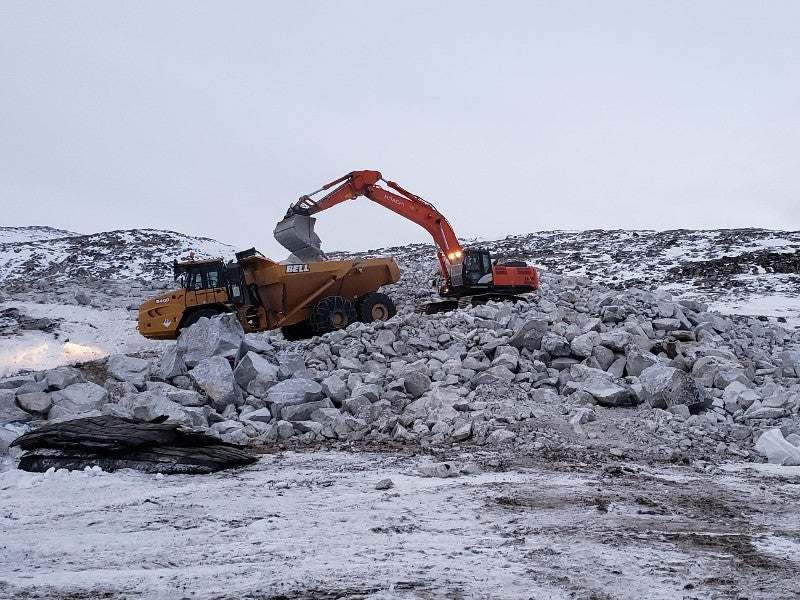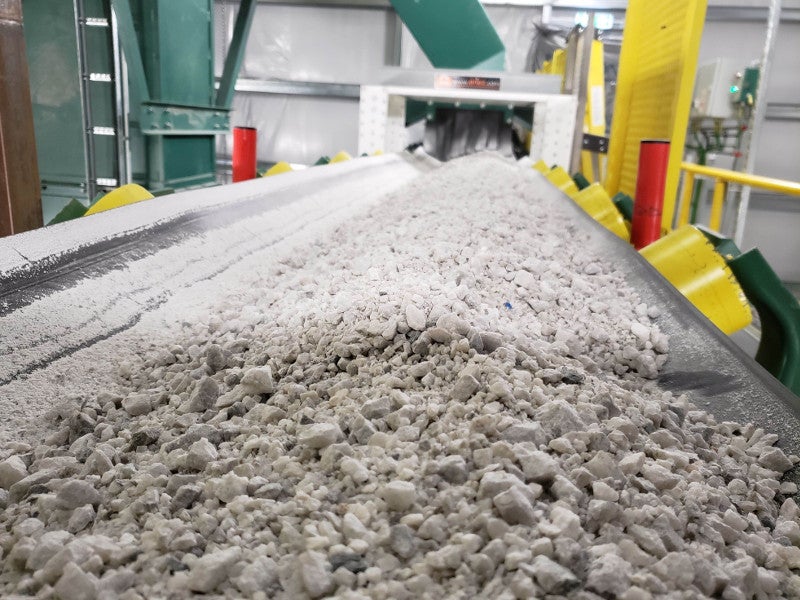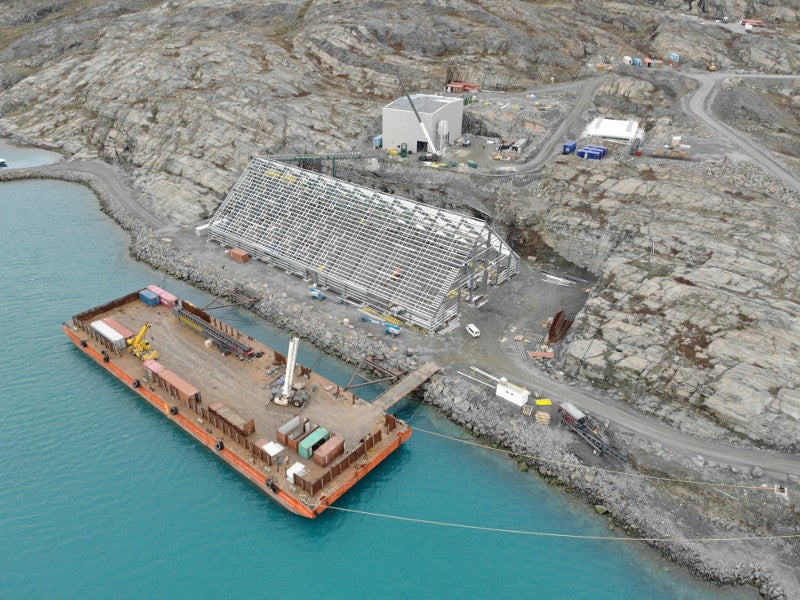The White Mountain (Qaqortorsuaq) project is a calcium-rich anorthosite mine being developed in Greenland. Hudson Greenland, a subsidiary of Hudson Resources, is the project developer.
Pre-feasibility study (PFS) for the project commenced in April 2013 and was completed by July 2014. Preliminary economic Assessment (PEA) was completed in March 2015, which envisaged a net present value of $205m.
The Government of Greenland granted a 30-year exploitation (mining) licence for the project in September 2015, extendable for an additional 20 years. The project is estimated to have a mine life of more than 100 years.
Construction works started in 2016 and were completed in November 2018, with commissioning achieved in February 2019. The project is forecasted to produce 200,000 tonnes per annum (tpa) initially, which will be increased to 500,000tpa in the future.
White Mountain project location, geology, and mineralisation
The White Mountain anorthosite project is located approximately 80km south-west of Kangerlussuaq and adjacent to tidewater on the Sondrestrom fjord in central west Greenland.
Located within the Naajat exploration licence (EL), White Mountain is a unique deposit comprising higher volumes of aluminium, silica, and calcium with lesser volumes of sodium and no other contaminants.
The project is characterised as an Archean calcic anorthosite hosted as an un-deformed island within the southern margin of the Proterozoic Nagssugtoqidian fold belt. It is classified as monomineralic calcium aluminium silicate feldspar hosting with very low impurities and high aluminium oxide (30%) content.
Reserves
As of May 2018, the White Mountain anorthosite project was estimated to contain 27Mt of indicated and 32.7Mt of inferred resources, at a Na2O cut-off grade of 2.5%.
Mining and processing
Conventional open-pit methods, including drilling and blasting followed by loading and hauling, are applied at the White Mountain anorthosite project. Major mining fleet comprises a Sandvik DX800 production drill and a Hyundai HL980 wheel loader.
Ore is being hauled using mine trucks and delivered to a mobile crushing facility near the mine. Crushing is being undertaken in three phases for obtaining separate feed for e-glass, filler, and coatings material.
The crushed material is being hauled by trucks and forwarded to the processing plant located at the port area. It undergoes magnetic separation before shipping to the port facility at Sondre Stromfjord (Kangerlussuaq).
Off-take agreement and transportation of anorthosite from White Mountain
Hudson Resources has agreed to sell the anorthosite produced at White Mountain to a North American materials company under a ten-year binding purchase agreement entered in July 2015.
In May 2016, the company entered a letter of intent (LoI) with Metro Ports, a bulk stevedoring and terminal operating company in the US, to design, build and operate a purpose-built port facility adjacent to the Port of Savannah.
The LoI is in line with Hudson’s plans to establish a key distribution hub in North America and transport anorthosite from White Mountain for manufacturing e-glass, paints, and coatings.
The facility at Port of Savannah comprises covered conveyors from the dock to a storage building, a 35,000t capacity dedicated concrete dome storage building, and trans-loading facilities. It also includes a process building for upgrading the material for paints and plastics by fine grinding, and a bagging facility.
Financing
Hudson Resources raised equity financing of C$10.9m ($8.14m) in February 2017 by issuing more than 32.26 million units in two separate private placements.
Hudson also raised $4m in a private placement of eight million units, priced at $0.50 a unit, from Greenland Venture, an investment company owned by the Greenland Government, in March 2017.
Cordiant Capital provided debt funding of $22.5m to Hudson Greenland, a fully owned subsidiary of Hudson, for the project in July 2017. The funding comprised a senior loan of C$17.3m ($13m) and a subordinated loan of C$12.7m ($9.5m). European Investment Bank (EIB) agreed to assume the senior loan in February 2017.
Infrastructure
Diesel generators are providing up to 750kW of power for the processing plant, truck shop, and accommodation buildings. Power supply for the quarry is proposed to be made from a separate 25kW generator.
Water is being sourced from a lake near the quarry site and transported through an insulated pipeline.
The project infrastructure also comprises a port facility at Sondre Stromfjord (Kangerlussuaq), featuring a building for storing the final product and a mobile ship loader. An 11km-long road connecting the mine with port is also part of the project.
Workers are being accommodated at the 44-person accommodation camp in Nuuk, the capital of Greenland.
Other infrastructure facilities include a work shop and maintenance building, fuel storage facility, explosives storage facility, and diesel generator building for all on-site power.
Contractors involved
RTS Greenland was awarded the drill and blast contract for laying foundations for the processing plant, product storage building, and ancillary infrastructure at White Mountain.
CWA Engineers prepared the detailed engineering drawings, while Merit Consultants International provided construction management services for the project.
John Goode prepared the PEA study in association with consultants from Arithmetek, Hains Engineering, and TAK Industrial Mineral Consultancy, while Canadian firm Hains Engineering prepared the PFS.
Ramboll Group and Automatic Syd were engaged for the electrical engineering and motor control centre facilities.
Hudson has engaged Denmark-based company Lillegaarden EL for conducting electrical installation works.
Ironclad was contracted for the steel and mechanical works of the processing plant, ore storage building, and material handling facilities at the project, while Gisborne Group provided supportive services to Ironclad.






